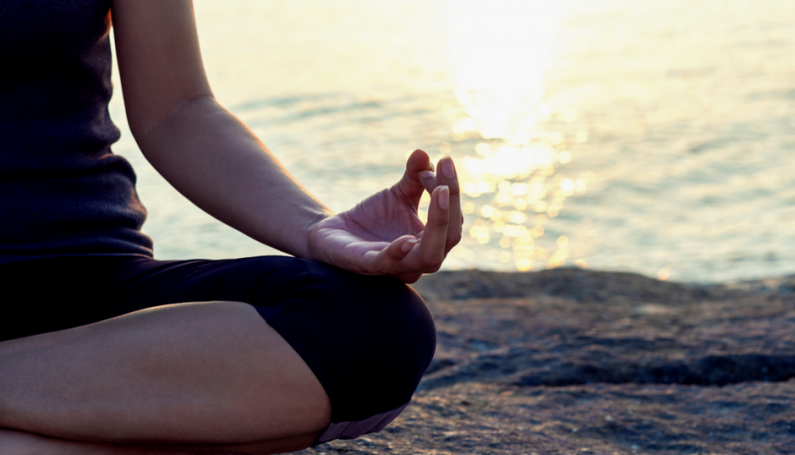A hand mudra is a gesture usually used in meditation practices to help direct the energy towards the brain. Because each of the fingers are said to symbolise certain aspects of existence, stimulating them will have a subtle effect in these areas. The thumb is said to represent the Supreme Soul and the first finger represents the individual soul. Making a circle by joining the first finger and thumb, therefore, represents the union of the individual soul with the Supreme. Both Jnana and Chin mudras have this same hand and finger shape but the difference is that in Jnana Mudra the palm faces downwards and in Chin Mudra the palm faces upwards, and thus there is a subtle difference in their effects.
Jnana Mudra is the mudra of knowledge and is used especially to invoke wisdom, peace and clear communication. This mudra is used during meditation to help us become receptive to the knowledge and wisdom of the Supreme. Sometimes we can incorporate it into our yoga asanas and reflect on aspects of wisdom. This mudra is nice to do in seated twists, dancer pose and mountain pose.
Chin means consciousness and Chin Mudra evokes peace and concentration. It also is used in meditative practices and lends itself nicely to some yoga asanas like tree pose, dancer pose and mountain pose.
By Vrndavan Dasi
Founder and Principal of Veda Yoga Teacher Training
